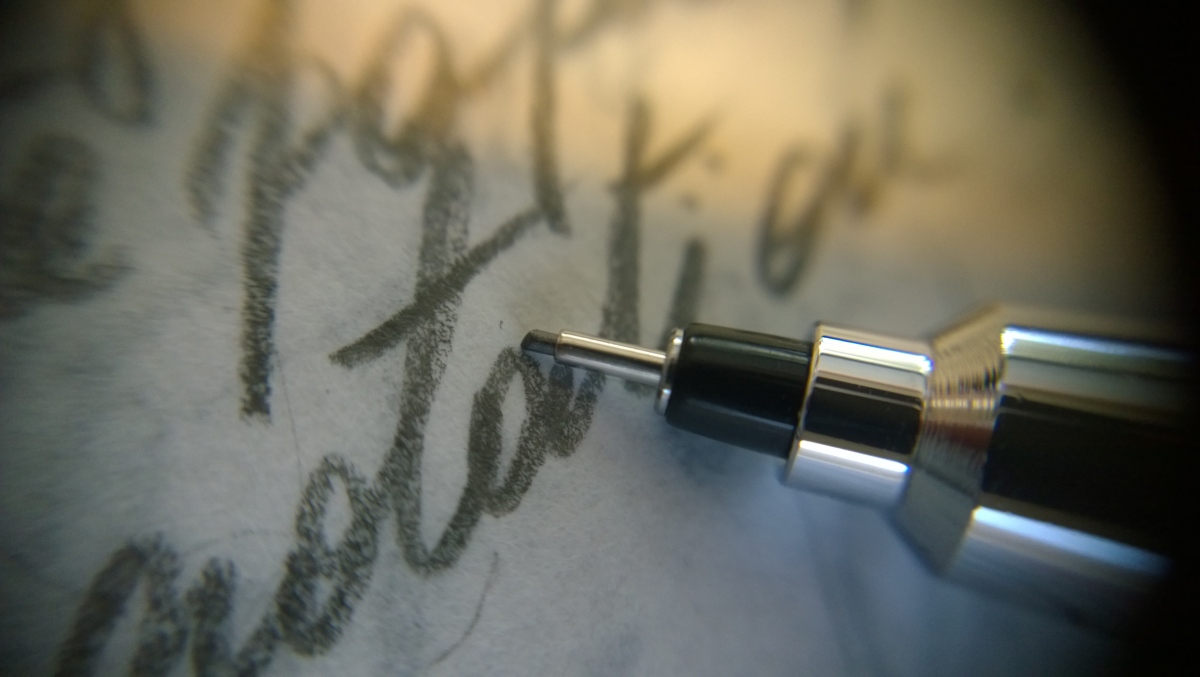When I think Mitsubishi, I think cars, or machines. When I think Uni, I think college (both in German and in Spanish “Uni” is what we call our “Universität” or “Universidad”). But what I don’t readily relate with Mitsubishi are writing instruments. However, Mitsubishi is the parent company of the Uni brand of pens and mechanical pencils. And they are very good at designing writing instruments. I have used their Uni-ball fineliners since time immemorial (that is, since college).
More recently Uni introduced the Kuru Toga line of mechanical pencils, whose distinguishing trait is that they include an ingenious mechanism that turns the graphite lead constantly as the user goes on writing. A toothed clutch turns the lead a few degrees every time the pencil is lifted from the paper. The action can be monitored by watching a ringlike symbol in a transparent window in the grip section.

The idea is to keep the lead always sharp to a point, instead of becoming chisel-like as is the case of usual pencils. The mechanism does work. In my case, however, when I first got the very pretty, all metal Uni Kuru Toga Roulette model, I got broad lines instead of the expected fine lines, worse than the lines I got with my Pilot Shaker, for example. I was quite intrigued. After careful observation, I noticed why: being used as I was to non-rotating leads, I imperceptibly turned the pencil constantly as I wrote or drafted, which kept the point very sharp. When using the Kuru Toga, this unconscious rotation counteracted the automatic rotation by the mechanism, which made the point assume the form of a perfect chisel…

It took me a while to learn not to turn the pencil in my hand, but after I did the Uni Koru Toga kept the point very sharp.
I suppose that for users who have not acquired the habit of turning the pencil while writing the mechanism helps keep the lines fine and sharp. In my case, I must concede that I unknowingly keep the lead sharp when writing with all other pencils without the ingenious mechanism. But I do appreciate and admire the engineering of this pencil. So I use it often as well.

The model I use is called “Roulette”. It has all-metal body and a knurled grip, which I very much like, It is available in gun metallic and silver finish. Mine is silver colored. This model has a very professional look, and can be obtained for under twenty US-dollars. In Brazil this pencil is rather difficult to come by; try the site www.lojaviajapan.com, and talk to Erika or Kazuo Nakano.
The black eraser under the pushbutton is very small, and thus not very useful; but it is there in an emergency. The pushbutton cover itself is translucent plastic – I would have preferred a metal cap, for this bland plastic part definitely does not go with the sturdy appearance of the pencil. But this may be a matter of taste.


This review of my No. 4 pencil of choice ends my series on propelling pencils. I plan to get back to propelling pencils later on, to review the Pentel Graphgear 500 (a workhorse for drafting) and an unlikely but very good Chinese pencil I also use. The next review will cover my No. 5 choice for mechanical pencils, the Toison d’Or pushpencils.

As a teaser for next week, here is an image of a Koh-i-Noor Toison d’Or clutch pencil.

Good-bye, and fare well!
